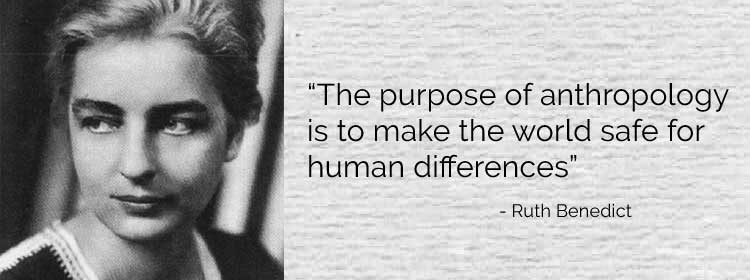History textbooks used in American schools tend to be focused on hearing male history, which is why International Women’s Day and Deaf History Month were established, so we don’t forget the incredible individuals who made history as well! This list is focused on Deaf women who made history-see if you know about half of them.
1. Juliette Gordon Low

Gordon-Low was the founder of Girl Scouts of America in 1912 with the goal of creating an all-inclusive environment for young women to learn about survival, teamwork, and goal setting. The Girl Scouts were one of the first groups to break the racial and disability barriers of its time.
2. Teresa de Cartagena

De Cartagena was a Spanish nun in 1453 who became deaf at 30 years old and as a result, she wrote a deeply intellectual essay about the solitude that came with the deafness. She wrote how it made her meditate better and more aware of the world around her. After being criticized for being a woman, she wrote a second essay on women’s intelligence and proved her critics wrong. To this day, she is remembered as Spain’s first feminist writer.
3. Charlotte Elizabeth Tonna

Tonna was a popular British novelist and poet who published her works as Charlotte Elizabeth in the 1840s, at the height of the Industrial Revolution. She became deaf at the age of 10 and wrote passionately about women’s rights and social issues. To this day, she is still considered as one of England’s most influential writers of her time.
4. Ruth Benedict

Benedict was the first female leader of anthropology in the United States in the 1930s and held the position of the President of the American Anthropological Association. She changed the course of anthropological studies by urging anthropologists to look at both folklores and cultures as one field instead of separate entities. Benedict is also the author of the world-famous book, Patterns of Culture in which she writes that cultures are just a consistent pattern of thoughts and actions, hence the study of folklore within the cultural studies.
5. Annie Jump Cannon

Cannon was deaf for most of her life and many believe her isolation led to her passion for astronomy. She attended Wellesley College in 1922 where she studied mathematics, biology, physics, and astronomy. At the time of her graduation, photography was just invented and she studied it as well, applying it to astronomy by taking photos of the stars. There was no classification system of the stars in the science community, so Cannon developed one: the Harvard Classification Scheme. Astronomers today still use her classification system!
6. Julia Brace, 7. Laura Bridgman, and 8. Helen Keller

These three ladies are deaf-blind and lived in succession of each other. The three women’s histories can be read as a chain of events: Julia Brace’s tactile signing, Laura Bridgman’s education and friendship with Anne Sullivan, then Helen Keller’s ambassadorship and fame. What is the common reputation all three hold? They were the first deaf-blind ever to receive education! Julia Brace is credited with the beginnings of tactile sign language. Laura Bridgman was the one who taught Anne Sullivan the tactile sign language and teaching methods that Sullivan later used with Helen Keller. Keller’s mother had read about Laura Bridgman and reached out to the Perkins School where Anne Sullivan was. Sullivan showed up at the Kellers’ house with a doll that Bridgman sewed the dress on and knowledge of tactile sign language, ready to teach young Helen Keller.
Keller grew up to be an educated woman and a political activist for human rights, visiting several countries to lecture on the importance of education for and inclusion of the disabled. She is the author of several books, one of them is her most popular The Story of My Life.
9. Gertrude Ederle

Nicknamed the “Queen of Waves,” she certainly was when she became the first woman to complete the swim across the English Channel! She set the world record in 1911 with the time of 14 hours and 34 minutes for 22 miles in rough waters. The tides of the English Channel are strong and change directions every 6 hours, making this one of the world’s most difficult long-distance swims. Ederle was inducted in the International Swimming Hall of Fame in 1965.
10. Regina Olson Hughes

Hughes was an American Scientific Illustrator of botanical art. Before working for the government as the official illustrator, she served in World War I as a translator; she was fluent in four languages: French, Italian, Portugese, and Spanish. 1936 is when Hughes continued her work for the government, only this time as the scientific illustrator for the Department of Agriculture. To be a scientific illustrator, Hughes had to have intricate knowledge of the different parts of each plant and be able to artistically replicate them in detail along with written descriptions. In total, more than 6,000 of her drawings are in the USDA handbooks for the Department of Agriculture.
She was the first deaf artist to have a solo exhibition at the Smithsonian Museum in Washington, D.C. in 1982. Her 40 orchids painted in watercolors were on display for the exhibit, which can still be viewed today at the museum. In further honor of her accomplishments, a new specie of the Bromeliad discovered in 1979 was named after her: Billbergia regina and a specie of daisy: Hughesia.
More information about International Women’s Day can be found here: https://www.internationalwomensday.com




I know and respect Ruth Benedict as a very influential writer. She made substantial changes to the course of anthropology. Her definition of culture is amazing and very practical indeed.
Interesting read! So good to know this. I read about Regina Olson recently. I will take time to conduct more research about the rest. Great women! History makers! Your memories lives on..